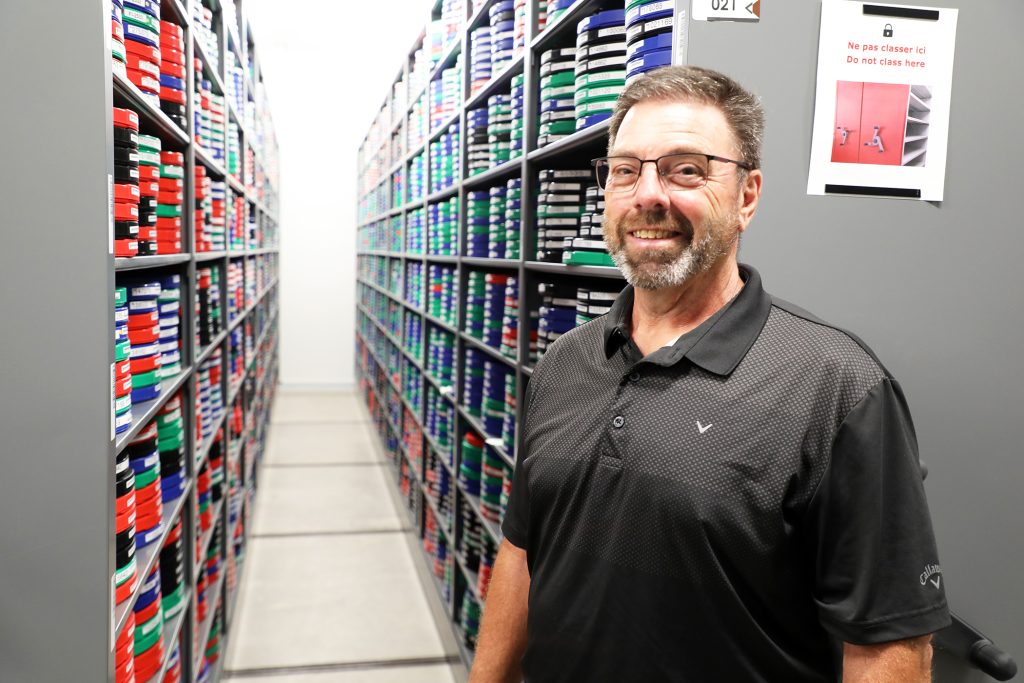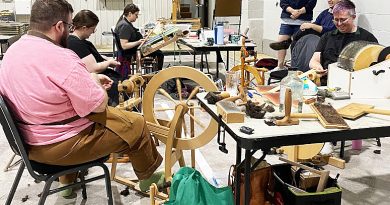CBC transmission control from WC
By Jake Davies - West Carleton Online
HUNTLEY – At the corner of Richardson Side and William Mooney roads, cut out of the forest, is a light red brick building with a big red steel building attached to it.
While it might look to the casual viewer to be a modern farmhouse with a barn attached, it is actually a Canadian Broadcasting Corporation (CBC) building responsible for delivering radio and television services to 99 per cent of all Canadians.

The sign on the road says CBC Transmission, and the 44-acre site is responsible for providing the CBC the means by which the corporation collects, distributes and delivers its radio and television services to Canadians. The site can monitor roughly 727 radio transmitters, and 27 digital transmitters distributed across more than 600 transmission towers across the country including the far north such as Resolute Bay and the Clyde River, serving 99 per cent of all Canadians, 24 hours a day, seven days a week. On the side, it also stores the CBC’s vast archives.
Transmission Ottawa Distribution and Operations supervisor Dave Poulin invited West Carleton Online for a tour of the facility, and we dropped by Friday, July 25.
Poulin has been with CBC Transmission since just before the building was opened.
“I hate to say it, but 37 years,” Poulin told West Carleton Online from the lobby of the rural building.
Poulin started with the CBC in May 1988, and the building on Richarson Side Road opened October that same year.
Originally located in Stittsville, the nearby Hydro facility upgraded its lines, and that affected the original building’s ability to monitor short wave transmissions. Hydro owned the property on Richardson Side Road and the two corporations worked out an agreement that saw the CBC move in to West Carleton.
“It’s evolved,” Poulin said. “Transmission monitoring wasn’t officially under the CBC before. In 2003, we wanted a national alarm centre that would monitor transmitter sites across Canada.”
While CBC Transmission can monitor every single site across the country, it focuses on the Ottawa region which includes 15 transmitters around the area with the largest tower at Camp Fortune.
Like all corporations, especially in the modern era, “we evolved again. We lost a lot of staff.”
Twenty-four/seven monitoring and headquarters moved to Montreal. Now the Carp-area site has a Transmission Integrated Support team (TIS) to “Take care of all the applications the transmitter uses.”
There are three TIS employees and three transmitter technicians working out of Huntley.
Along with broadcasting CBC radio, television and high-definition services, the towers also serve private companies.
“We do have clients, Bell, Rogers, CTV,” Poulin said. “Camp Fortune is probably the best site if you want to broadcast in the Ottawa Valley. So, we do bring in revenue.”
There are also two employees in the national warehouse, which is in the big red barn. The 5,000 square foot (465 sq. metres) barn filled with all kinds of transmission, broadcast and recording parts and equipment, helps the CBC get broken transmitters back on the air.
“It was constructed to save money,” Poulin said. “Let’s say you have a failure of a certain part. We might be able to ship in 24 hours. Our mandate is to make sure listeners receive our broadcasting.”
Broadcasters even have the ability to go live from the CBC Transmission building, if neccesary.
“We have to be able to test equipment and make sure it works,” Poulin said. “The worst thing you can do is send out a piece of equipment to a transmitter and it doesn’t work.”
Also on sight is the national CBC archives. From promotional posters and artwork to transmission maps, to shelves and shelves and shelves of video tape, all stored in a climate controlled, giant room, there is a lot of history stored in the building.
In 2020-2021 the CBC added on the climate-controlled storage space.
“They were leasing sites for archives,” Poulin said. “So, all the archives are now stored here and are in the process of being digitalized. It’s a building within a building.”
There is a French side and an English side, and one random drawer opening reveals a transmitter map from 1945.
“I have no idea how much footage is in there,” Poulin said.
There is also research going on. In the backyard there is a small transmitter building, powered by solar, as the CBC Transmission crew sees how much money can be saved by taking transmitters off grid.
“We’re looking to see if we can transmit with no hard lines,” Poulin said. “Just solar. So far, it’s worked pretty good. It’s a proof of concept. It can be pretty expensive to bring Hydro to some of the sites, but this has to be reliable. We’re seeing how many days we are without power. There are all kinds of different situations, but we’re always looking for cost savings.”
Poulin says it costs the average taxpayer $35 to fund the entire CBC operation and the team at every level, works hard to make sure those taxpayers get their money’s worth.
“These guys are committed,” he said. “It’s not just the transmitters the technicians have to keep working. They have to be the plumbers; they cut the grass; they do the site maintenance. They have to fly in; snowmobile; snowshoe. Some of these sites are pretty remote. What they do is amazing.”












This is so interesting… I had no idea such an important facility was in our backyard. Who knew?